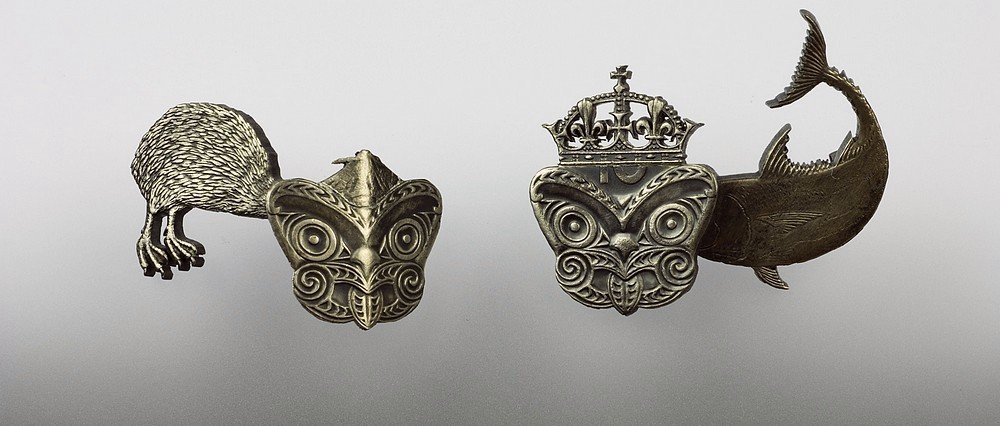
McIntyre Wilson’s Plenty of Change is an important example of Maori design, as it shows a traditional icon being reconstructed with a contemporary twist to convey different stories of our post-colonial histories (41). Hei Tiki is highly regarded as sacred objects that are worn around the neck as a symbol of kinship and protection (40). McIntyre Wilson transforms New Zealand and Cook Island coins into unique brooches that redefine the traditional Hei Tiki, enabling people to wear Tiki in new interesting ways. Although Tiki traditionally resembles human figures, McIntyre Wilson places the Tiki face onto other Maori and Pacific Island icons, such as the Kiwi and Fish (symbolic of the land) which creates new stories and meanings and challenges the preconceived notions that surround Hei Tiki. McIntyre Wilson has cleverly infused and combined symbols to create designs that relate to New Zealand’s nineteenth-century history, yet suggest alternate realities (41). These brooches have been cleverly crafted by the hands of a jeweller, with the Tiki on the left appearing as if Mt Taranaki is sitting atop its head, which is a reference to McIntyre Wilson’s iwi (Taranaki, Titahi, Nga Mahanga) (41).
Works Cited:
Anderson, Athol. “Chapter 1: Ancient Origins”. Tangata Whenua: An Illustrated History. Ed. Atholl Anderson, Judith Binney, and Aroha Harris. Aotearoa: Bridget Williams Books, 2014. 40-41. Print.